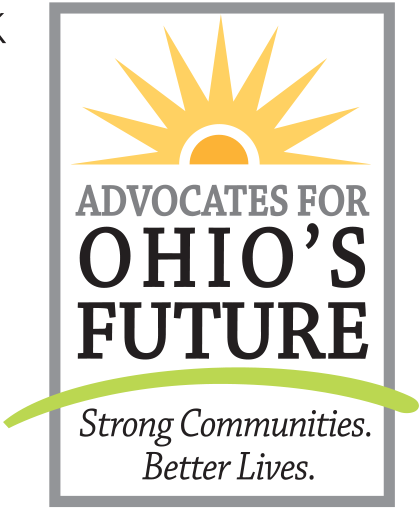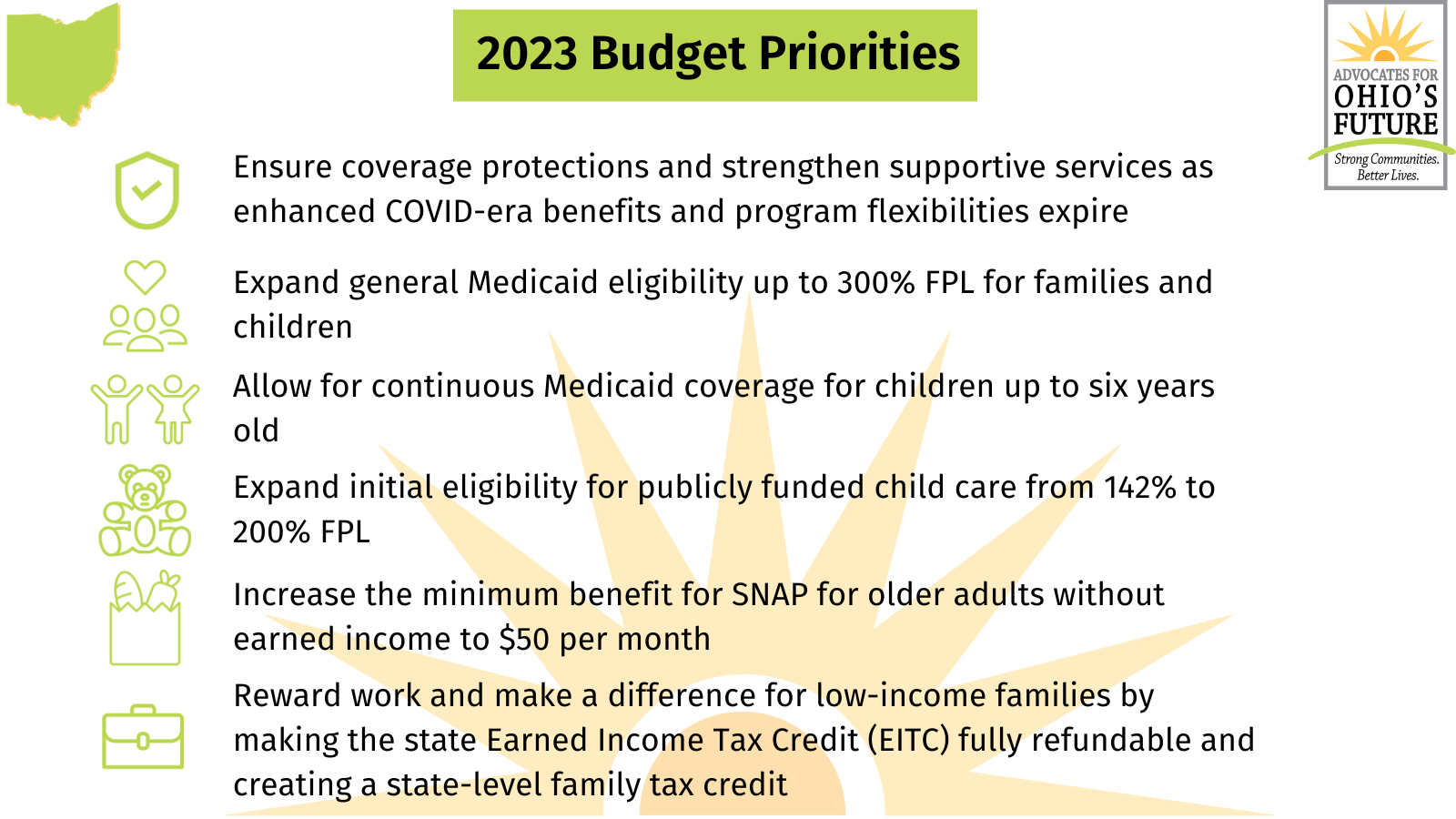by: Sarah Hudacek, AOF Policy Associate
Budget priority: Expand initial eligibility for publicly funded child care from 142% to 200% FPL
Publicly Funded Child Care (PFCC) provides subsidized child care for low-income families. Unlike most public benefits programs that only have an income ceiling, PFCC also has an income floor. Ohio families must earn less than 142% of the federal poverty level (150% FPL for families with kids with disabilities) to enter the program, and as families’ income increases, their share of the cost of child care increases. PFCC subsidies continue until a family reaches 300% FPL, when their participation in the program ends.
For a single parent with two kids, 142% FPL is just $35,301 per year. Once that family reaches 300% FPL, or $74,580 per year, the family must leave PFCC.
The previous Ohio General Assembly convened a Study Committee on PFCC and Step Up To Quality (SUTQ) to dissect the current state of Ohio’s child care system and the SUTQ quality rating system. This committee’s final report is only the first step in tackling the myriad issues facing child care in Ohio, including:
Workforce shortages, mostly attributed to comparatively low wages for early childhood educators, averaging $10-13/hour.
Increases to the costs of operating a child care business
Limited availability of child care spots across the state, especially for children in the PFCC program, which often reimburses providers at a lower rate than private pay families typically pay.
Unsustainable funding: Child care is funded through a combination of Temporary Assistance for Needy Families (TANF) federal funds, Child Care and Development Block Grant (CCDBG) federal funds, and state funding. Ohio spends a larger portion of its TANF grant on child care than 46 other states, and the increasing costs in the child care system will soon exhaust the funding available through existing sources as early as state fiscal year 2028.
Varying approaches amongst legislators towards ensuring quality child care programs while reducing administrative burden and costs for child care providers
With this challenging landscape in mind, increasing PFCC eligibility up to 200% FPL would be one of the quickest ways to improve the access and affordability of child care - a vital work support for Ohio families. This change would allow families with slightly higher incomes, but who still struggle to afford the average $10,000 per year cost of child care, to receive PFCC subsidies.
In the last biennial budget process in 2021, the legislature increased PFCC eligibility from 130% to 142%, and Governor DeWine’s executive budget proposal released last month included an initial eligibility increase to 160% FPL.


